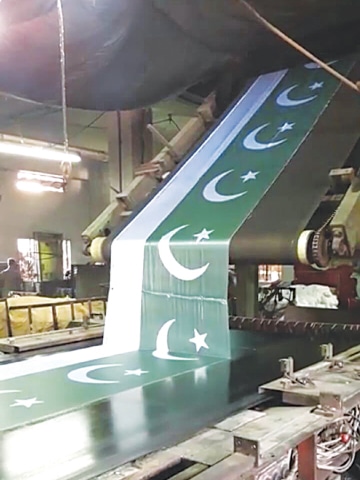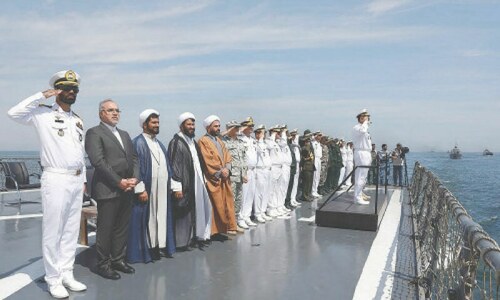
There are numerous occasions that make us feel so patriotic that we want to fly our green crescent and star banner. Be it Independence Day on August 14, Resolution Day on March 23, Defence Day on September 6 or any other day that we want to cheer for Pakistan, such as during a parade or a match, we have the country flag in our hand, waving it like crazy. On Independence Day, it is hoisted on the roof, balcony or windows of homes, on cars and bike handles too, along with flag-printed paper bunting used in decoration.
The Pakistan flag was designed by Syed Amiruddin Kidwai. The dark green flag with a white margin or vertical bar at the mast and a white crescent and a five-pointed star in the centre symbolises various things. The green in the flag has Islamic significance and also represents peace and prosperity, the crescent represents progress and the star represents knowledge and enlightenment. The white margin was put there especially to represent the non-Muslims of the country. The size of the white portion is one-fourth the size of the entire flag.
This flag was first presented to the Constituent Assembly of Pakistan on August 11, 1947 by the first prime minister of Pakistan Quaid-i-Millat Liaquat Ali Khan. In his speech that day, Liaquat Ali Khan had said that the flag — which didn’t represent any political party or community — was an emblem of peace, the flag of the Pakistani nation which “stood for freedom, liberty and equality.”
It’s flag-flying season everywhere. Eos visits the biggest printed flag manufacturer of the country to see how it contributes to Independence Day celebrations
Earlier, it would take time to make the flag as the white portions had to be cut separately and then stitched on to the green but these days you have the printed flag flying just about everywhere. “We used to make the stitched variety also but the idea of printing flags came to our father Sheikh Nisar Ahmed Parchamwala back in 1985,” says Asim Nisar, director of VIP Flags. “Today, after his idea clicked, he is also popularly known as Baba-i-Parcham,” he smiles.

“We are basically a fabric company, producing cloth on looms, and our father thought printing the flag in mongia green instead of stitching the white parts on the green was going to help us mass produce it. It would also help in reducing cost,” he explains.
“A booklet was published by the Ministry of Interior in the early 1970s. We acquired it to get the correct size, proportion and measurements of the flag because if we were going to do this, it had to be done accurately,” he says.

He explains that his father was against flags with ‘Jashn-i-Azaadi Mubarak’ written on them or those with pictures of the Minar-i-Pakistan or the Ghauri missile or some army tank drawn on it. “My father started a campaign against such flags for which he even approached the court of law. After getting a positive response from there, even the Pak Sarzameen Party was faced with a problem about freely flying their flags as they had ‘PSP’ printed on the side, which was seen as desecration of the national flag,” says Nisar.

In 2004, there was the unrolling of Pakistan’s biggest flag at the National Stadium Karachi, which created a Guinness record. Nisar proudly claims that his father’s company made that flag. “We had heard about the 25,000 square feet US super flag so we, along with Shell as our sponsors, made an even bigger — 173,400 square feet — Pakistan flag. Opening that flag was a very proud moment for all of us. My father, all of us and the then chairman Senate Mian Mohammad Soomro held on to the ends on the fabric as we pulled it open. The moment was captured on film and can still be watched on YouTube,” he says.

Asked where that flag is now, Nisar says that only one year later there was the devastating earthquake of 2005 in Pakistan and they cut up the flag to produce sheets and quilts for the quake victims up north.

“But,” he says, “making the flag turned us into experts. We also made the biggest and highest-flying Saudi Arabian flag that was flown in Diriyah in 2006 and the huge Afghanistan flag big enough to cover three football fields.” In fact, all the big flags flying at hotels and official places have been produced by VIP Flags. This also includes the Pakistan flag hoisted at the Wagah border last year in reply to India’s flag which they flew at Attari.

VIP Flags has remained busy during last month’s election as they also produce party flags. “Now, after the elections, we have Independence Day. Even though the schedules have been hectic, with huge demands and orders for Pakistan flags, it is something which brings us the greatest of joys,” he says.
The writer tweets @HasanShazia
Published in Dawn, EOS, August 12th, 2018
















































